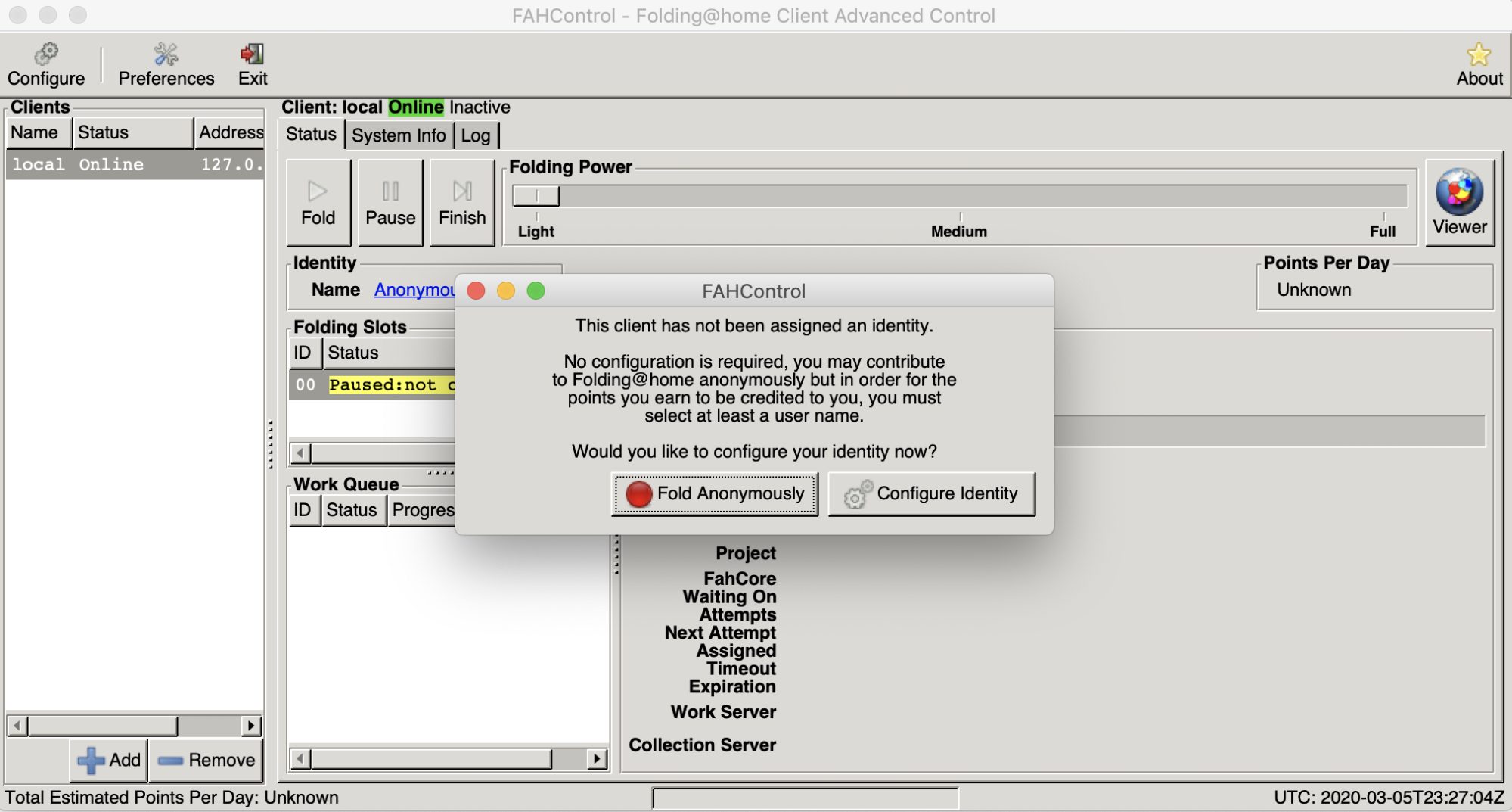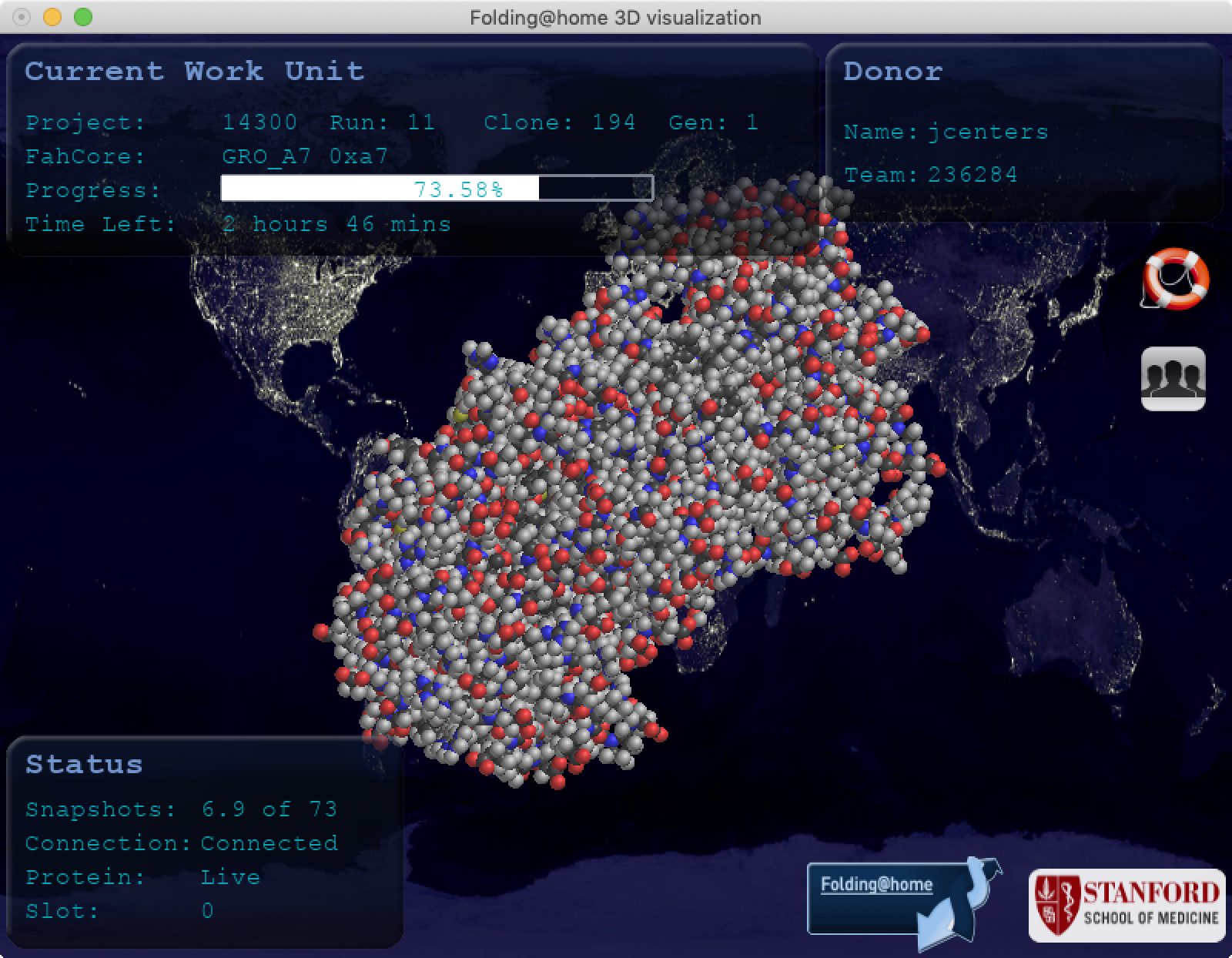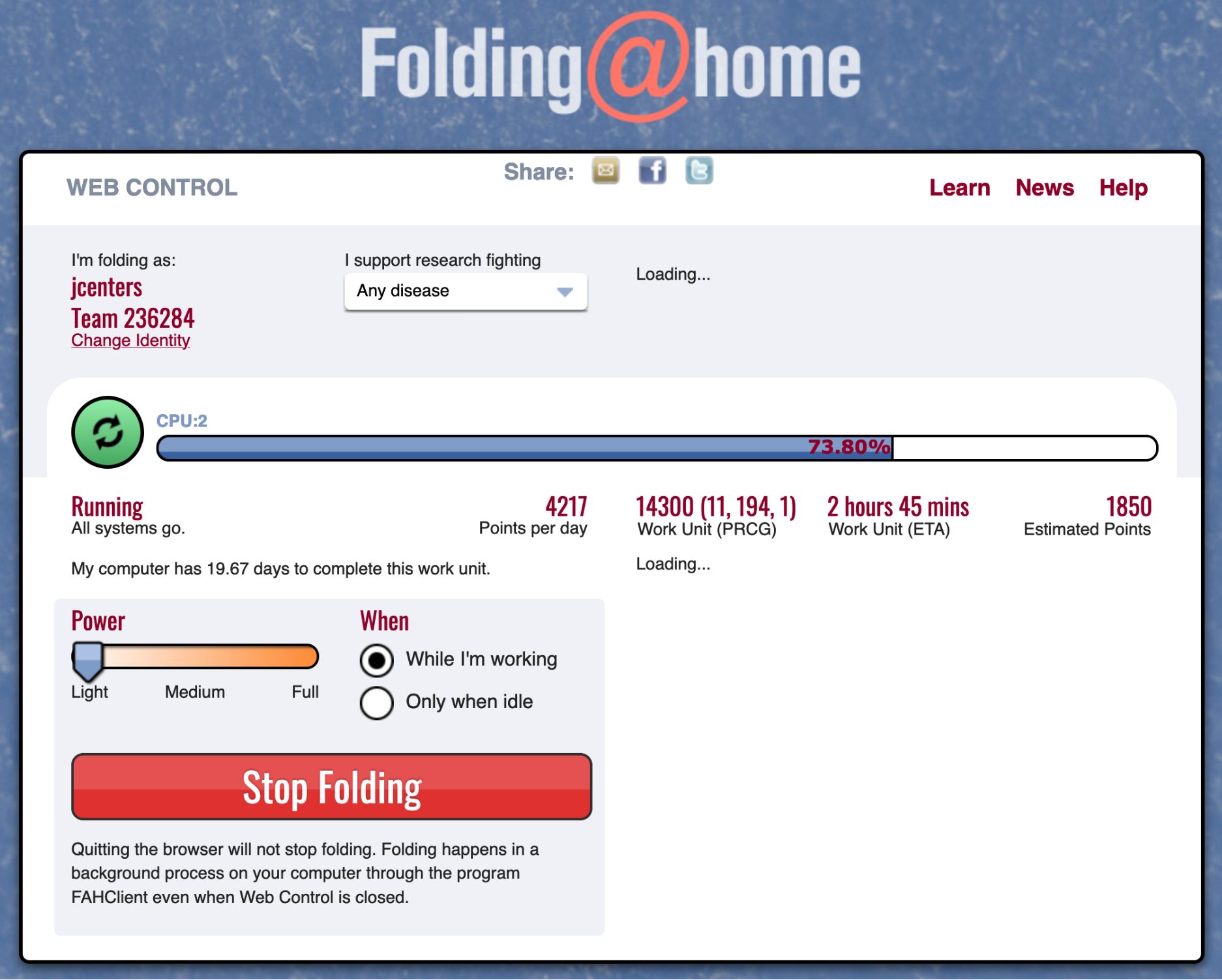Your Mac Can No Longer Listen for Aliens, but It Could Help Cure COVID-19
The volunteer portion of SETI@home is going into hibernation. SETI@home was the world’s first major distributed computing project, which let anyone with spare CPU cycles help the Berkeley Search for Extraterrestrial Intelligence Research Center look for signs of communication signals from space. The project launched almost 21 years ago (see “SETI Brings Space Exploration to Home Macs,” 24 May 1999), and it was a big deal on the Internet for a long time, with many online communities forming teams that competed to generate the most work credits. TidBITS has had a SETI@home team since the launch of the Mac client, with over 303 million credits generated, putting it in the top 5% of teams. It still has 23 active members, most notably Bob Lauterbach, who contributed over 103 million of those credits!
SETI@home is going into hibernation because it has all the data it needs. The project’s astronomers said that they’re at the point of diminishing returns with getting more data, so now it’s time for back-end analysis of the results, which they’ll write up in a scientific paper. By all counts, SETI@home has been a rousing success, whether or not it discovers communications signals from space.
If you’re looking for a new distributed computing project to join (calling Bob Lauterbach), the 20-year-old Folding@home project is still going strong. Folding@home is dedicated to “understanding protein folding, the diseases that result from protein misfolding and aggregation, and novel computational ways to develop new drugs in general.”
In addition to cancer, Alzheimer’s, Huntington’s, and Parkinson’s, Folding@home is tackling a disease that has been dominating the headlines: COVID-19. Your contributions could help researchers find a treatment. It’s easy to get started with Folding@home:
- Download the Folding@home installer and run it.
- After Folding@home is installed, it will open a Web page that tries to connect to the Mac client. Ignore that for now, because it won’t work yet.
- In the Finder, open
/Applications/Folding@homeand launch FAHControl. Beware that it looks like a Windows 95 application.
You’ll be presented with a warning—it could take a while—that the client has not been assigned an identity. You can click Fold Anonymously to get started quickly, or if you’d like to get credit for your Mac’s CPU cycles, click Configure Identify and enter a username. You can join the TidBITS team by entering 236284 as the team number.
Since Folding@home consumes a lot of CPU cycles, the client pauses by default if your Mac laptop is running on battery power. You can toggle that setting in Configure > Advanced > Power.
Curious about what your Mac is doing? Click the Viewer button to open FAHViewer and get a sweet 1990s-style rendition of the molecules you’re working on.
For an interface that’s easier on the eyes, access the Web client at https://client.foldingathome.org/. As long as the “I support research fighting” setting is set to Any Disease, it will work on COVID-19 calculations.
Who knows, maybe your Mac could be the key to stopping COVID-19?



The article noted that Tidbits has had a SETI@Home team. Is there one for Folding@home ?
Yep, it’s in the instructions for signing up for Folding@home, so existing users might not have seen it. We’re team 236284. Thanks for joining us!
Hmm… makes sense to do this in the day time now that my house has solar panels, and a spare mac running ubuntu. I used to dismiss it before.
Is there a way to make the app run just at night? It’s spinning up my little ol’ Mac mini’s fans pretty noisily. I didn’t see a pref that would schedule its run.
Good article! I just joined the TidBITS team on F@H
I’m in and on the team. Feels good to do SOMETHING.
The link https://client.foldingathome.org/ wouldn’t load on Safari, kept timing out. But loads fine in good ol’ Firefox.
Not that I’ve been able to find quickly, but I’m hitting the same thing—it hammers the fans on my 27-inch iMac, so much so that I have to pause it while I’m working.
If you enter the Web interface, you can set it to work only while your computer is idle.
Points to Josh for pointing out the obvious! I was assuming the two interfaces were equivalent, but that doesn’t seem be the case. The Web interface also lets you choose how much power to allot to the engine, which might keep fans from spinning up.
I was assuming the two interfaces were equivalent, but that doesn’t seem be the case. The Web interface also lets you choose how much power to allot to the engine, which might keep fans from spinning up.
But I’m already enjoying the quiet now that it’s set to work only when my Mac is idle.
FWIW, the Web interface didn’t want to load for me in Brave, but it worked fine in Firefox.
Team: TidBITS
in the top 5% folks
Thanks for posting that, @tommy! We picked up a few more people in the last couple of days and jumped 2000 spots from when I looked. Who knows how useful Folding@home’s efforts will be in tackling COVID-19, but it does feel like something concrete we can do to work toward a solution, rather than merely supporting mitigation.
Being a victim of COVID-19 (no, I did not get sick even though I’m in one of the danger zones… long retired geezer, errr boomer, I had my heart bypass surgery postponed) I was interested in making SOME contribution (retired, fixed income, so can not do money) so I picked up FAH. I got the web interface to work once, but outside that it doesn’t work (using Chrome). Nor do the stat pages, I get “bad gateway” returned. Only thing that works is the w95 looking app… but links to exactly what project one is working on doesn’t work.
Problem is that while it may appear one can choose which of several projects one can contribute to (not one of them having seemingly anything to do with COVID/SARS), it all 100% random what your work units go towards (when I had the web interface actually work, I was able to read about that project, but now I notice it’s on another project now).
So I guess I have to go download Firefox to be able to have any use of the web interface? I wonder if anyone there is making ny attempt to fix this situation… far as I know, Chrome is very decently supportive of web standards.
Oh, I have a bit of an overactive (running hotter than I’d like) Northbridge; since I started folding I DO notice is has bumped up the running temp a few degrees… yeah I run Mac Fans Control to keep it somewhat in check, but once summer hits, I may retire FAH.
Installed it - thanks for the instructions.
Anyone else seeing this?
11:26:02:WU01:FS00:Connecting to 65.254.110.245:8080
11:26:03:WARNING:WU01:FS00:Failed to get assignment from ‘65.254.110.245:8080’: No WUs available for this configuration
11:26:03:WU01:FS00:Connecting to 18.218.241.186:80
11:26:03:WARNING:WU01:FS00:Failed to get assignment from ‘18.218.241.186:80’: No WUs available for this configuration
11:26:03:ERROR:WU01:FS00:Exception: Could not get an assignment
I think they are overwhelmed. I just wanted to check
And 16 days later, Team TidBITS has moved up in the rankings from 7362 to 3772—go team! I’m letting Folding@home run at full power on my iMac, but only when I’m not using it, and that’s worked out well. FWIW, we’re basically net-zero thanks to 18.9 kWh of solar and geothermal heating, so the power consumption isn’t an issue.
13 days later later, Team TidBITS has moved up to 2615. Our upward mobility will be slowing down—when you look at the top teams, they’re WAY ahead.
Nonetheless, this is having an effect, as Folding@home reports:
Check this out!
Adam – you mentioned somewhere that you were running Folding@Home. I have also been doing so, on a 2013 Mac Pro, and I notice that the matching of the background program to the host Mac is sub-optimal. As you know, there are three ‘power’ settings: Light, Medium and Full. On the Mac Pro, Light says it uses 3 cores, Medium 7 and Full, 8. On anything except Light my Mac gets very hot. Once I noticed this I installed the background app Temperature Gauge and now keep an eye on the core temperatures. No help for your horrible SSD issue, I know, but something Folding@Home users should be aware of, as by default there is no core temperature monitoring on Macs.
Thanks—there’s no way to know, but it’s entirely possible that the temperatures were just too hot during the off-hours when I wasn’t working at the Mac. I don’t know if macOS would have any error warnings or states that would alert the user to problems, but I didn’t see anything. I use iStat Menus, which can track all the sensor temperatures, but I didn’t think to look at it at the time.